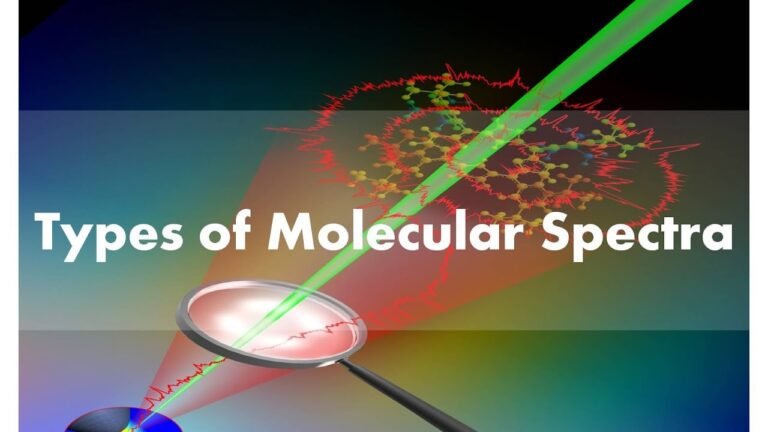The field of spectroscopy investigates the physical processes that occur when electromagnetic radiation interacts with matter. Generally, the primary focus of molecular spectroscopy is on the interactions between single molecules. Studying the molecules of interest in the gas phase is a useful method for isolating them.
Additionally, the study of chemical molecules at the atomic level is called molecular spectroscopy. Absorption patterns are the results of atomic or molecular interactions with electromagnetic energy. The atomic electronic configuration in both the ground and excited states and the molecule’s structure may be studied using this method.
Table of Contents
Molecular Spectroscopy Instruments
There are many distinct kinds of molecular spectroscopy, but they all require the interaction of analytes with light. Imaging, sensing, and understanding of basic chemical principles have all been tremendously aided by advancements in Molecular spectroscopy instruments. Each has benefits and drawbacks best suited to a particular field of study.
FTIR – Fourier Transform Infrared Spectroscopy
Fourier transform infrared spectroscopy (FTIR) may be used to quickly and accurately identify and quantify various materials in a given sample. With the help of these instruments and supplies, you can take advantage of user-focused workflows and complete FTIR spectrometry performance in the lab and the field.
Molecules are irradiated with infrared light and then absorbed at certain frequencies; this is what IR spectroscopy is all about. The observed frequencies correspond to specific molecular movements and are hence sensitive to the molecule size, structure, and composition.
Fluorescence Spectroscopy
When studying anything from DNA folding to cellular imaging, fluorescence spectroscopy has been the leading name for quite some time. This flexibility results from the wide availability of dyes, proteins, and tags that may be readily included in a research design to examine a biophysical process. Single-molecule fluorescence spectroscopy, confocal, and total internal fluorescence microscopy are all examples.
The innovation of the fluorescence spectrophotometer, along with the extensive selection of accessories and supplies available, allows for the production of detailed analysis findings in various fluorescence spectroscopic applications.
LDIR Chemical Imaging Spectroscopy
Using a quantum cascade laser (QCL) paired with quickly scanning optics, Laser Direct Infrared (LDIR) imaging offers a simplified and faster method for molecular imaging. High-quality imaging and spectral data are readily available from the 8700 LDIR chemical imaging system, making it well suited for studying microplastics.
If you use the LDIR, you can examine a lot of samples in a short time (minutes instead of hours). Tablets, laminates, tissues, polymers, and fibers may all have their compositions analyzed with the help of this powerful solution, which delivers more statistical data than ever before. Decisions on product development may be made more quickly and with more confidence when more relevant data is at hand.
Raman Spectroscopy
Airport security screening, pharmaceutical quality control, and on-site detection of dangerous chemicals use Raman spectrometers’ patented spatially offset Raman spectroscopy (SORS) and transmission Raman spectroscopy (TRS).
SORS allows Raman spectrometers to examine via receptacles and unclear barriers. They range from high-throughput raw material designation inside an unopened package at pharmaceutical-grade management to assisting first responders in determining the contents of suspicious packages.
UV-VIS & UV-VIS-NIR Spectroscopy
Cary spectrophotometers are known for their superior performance because of their history of innovative optical design. Ultraviolet-visible (UV-Vis) spectrophotometers from Cary are versatile and trustworthy instruments that may be used for various standard and specialized tests.
Photometric excellence in a wide variety of applications for both liquid and solid samples is provided by Cary UV-Vis-NIR (ultraviolet-visible-near-infrared) spectrophotometers. The UV-VIS and UV-VIS-NIR instruments are easy to use and precisely measure everything with unrivaled accuracy and resolution.
Conclusion
As this study area advances, previously unknown cellular processes will become accessible for research and spectroscopy, perhaps in real-time. Researchers’ efforts to solve problems in various spectroscopic areas will lead to advanced instruments, better diagnostics, and insights into previously unexplained biological processes.
Source:
https://www.bartleby.com/subject/science/chemistry/concepts/applications-of-molecular-spectroscopy
https://jila.colorado.edu/lewandowski/research/molecular-spectroscopy

